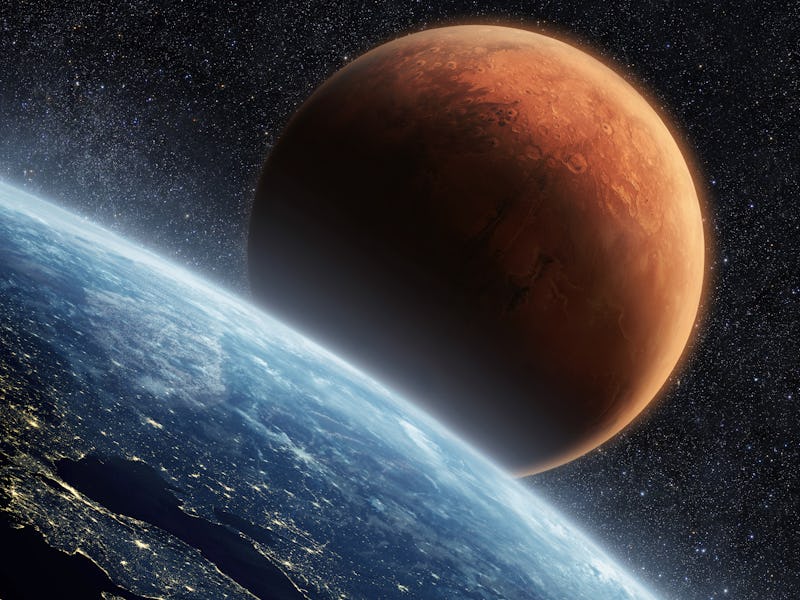Planet 9: Is Earth’s long-lost twin lurking in the outer Solar System?
Early drafts of the Solar System are messy.

Our Solar System hasn’t always had the arrangement of planets we see today. Past iterations put other planets through the wringer, and some of them got booted — including a long-lost alternate Earth.
The discovery — A review paper published earlier this year in the Annual Review of Astronomy and Astrophysics takes a long, hard look at the ominously named “third zone” of our Solar System. This is a region of space extending from beyond Neptune and out into interstellar space. Out there, somewhere, Earth’s would-be twin may be hiding.
INVERSE is counting down the 20 science discoveries that made us say “WTF” in 2021. This is #12. See the full list here.
According to planetary scientists Brett Gladman of the University of British Columbia and Kathryn Volk of the University of Arizona, who authored this review, several of the best computer-generated models we have of the Solar System’s earliest days feature at least one extra planet in an unexpected place.
“Our simulations found that in about half of the cases, all of the Mars-scale planets in the outer Solar System were ejected into interstellar space,” astrophysicist Scott Tremaine at the Institute for Advanced Study told Inverse in September.
Here’s the background — The “My Very Excellent Mother Just Served Us Nachos” version of the Solar System has a relatively simple structure. There are four rocky inner planets between the Sun and the Asteroid Belt (the first zone), and then there are the gas and ice giants (the second zone). Past Neptune resides dwarf planets like Pluto and Eris — the third zone.
This perfect symmetry of size didn’t just work itself out. There were earlier arrangements of planets — including some we can no longer find.
Saturn’s system, which may have been part of what launched this planet out of the system.
The Solar System Saga
The computational models tell an epic story.
At one point, the four outer giants orbited the Sun at different distances — and perhaps even in a different order — than they do today. Their gravitational fields interacted, pushing Jupiter closer to the Sun and pushing the other three further out.
The turmoil also ejected one or more rocky planets about the size of Earth and Mars to the far reaches of the Solar System — or out of it entirely, we’re not quite sure. Gladman and Volk say no single model of how these giants evolved explains the outer Solar System’s current array of objects and what it took to get here.
Likewise, some dwarf planets and smaller objects beyond Neptune, like comets, formed closer to the Sun before venturing out. These primordial objects are composed of different materials than other bodies in the Solar System and have elongated, tilted orbits because of gravity boosts that took them far out. This could be where the lost Earth twin is hiding, the scientists theorize.
Or, maybe there’s no planet out there at all. But it’s certainly worth a look.
INVERSE is counting down the 20 science discoveries that made us say “WTF” in 2021. This is #12. Read the original story here.
This article was originally published on